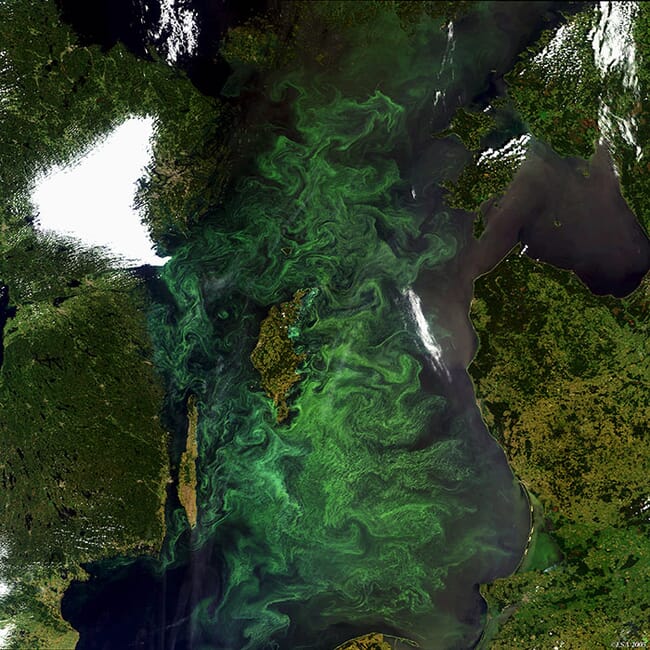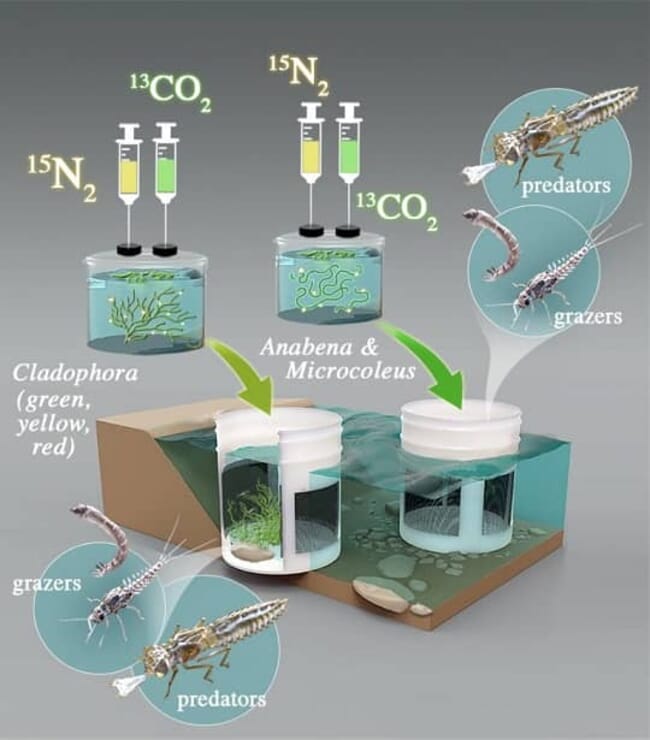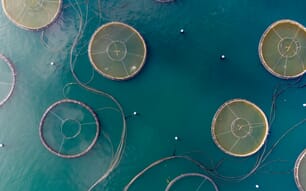
© ESA
The complex ecology of organisms living in algae in a water system – the algal microbiome – can help researchers learn what makes an environment healthy, what makes it potentially toxic and how algae growth can spur a shift between these two extremes. To learn more about this, a multidisciplinary team will to translate the codex contained in the microbiome of common algae into computer algorithms that can predict a wide range of microbial interactions.
The team, which includes researchers from NAU, University of California-Berkeley, Lawrence Livermore National Laboratory and University of Nebraska-Lincoln, will conduct experiments in rivers in Arizona and California. By manipulating nutrients and sunlight, they will look for the biological “switches” that get turned on and off by organisms living in the algal mat, a laminate composed of algae, bacteria, fungi and tiny animals that grows on rocks and sediments of riverbeds.
“When does productive algae become toxic strains of Cyanobacteria, which can be really harmful to marine life, dogs and humans, and what are the biological switches that flip?” said principal investigator Jane Marks, professor in biology in the Center for Ecosystem Science and Society (Ecoss) at NAU. “Even in a relatively pristine river like the Eel, we get these very sudden shifts from productivity to toxicity, and we don’t really understand the tipping points.”
Because algal mats are long-studied and relatively accessible to observe, the team will use them as models to better learn how microbial communities beyond rivers behave. The team will combine field experiments with high-tech molecular tools and machine learning to unravel the complex interactions among bacteria and algae into a set of predictive rules. The experiments they conduct and computer models they develop will illuminate which interactions among micro-organisms have the power to change the health of a river or a human gut.

The NSF award will support training 10 undergraduate students, two postdocs and four graduate researchers at NAU. The team will collaborate with tribal community partners and citizen scientists to conduct field trips called “algal forays,” and plans to share what they learn about the algae microbiome through community art and science collaborations like Parched: the Art of Water in the Southwest.




